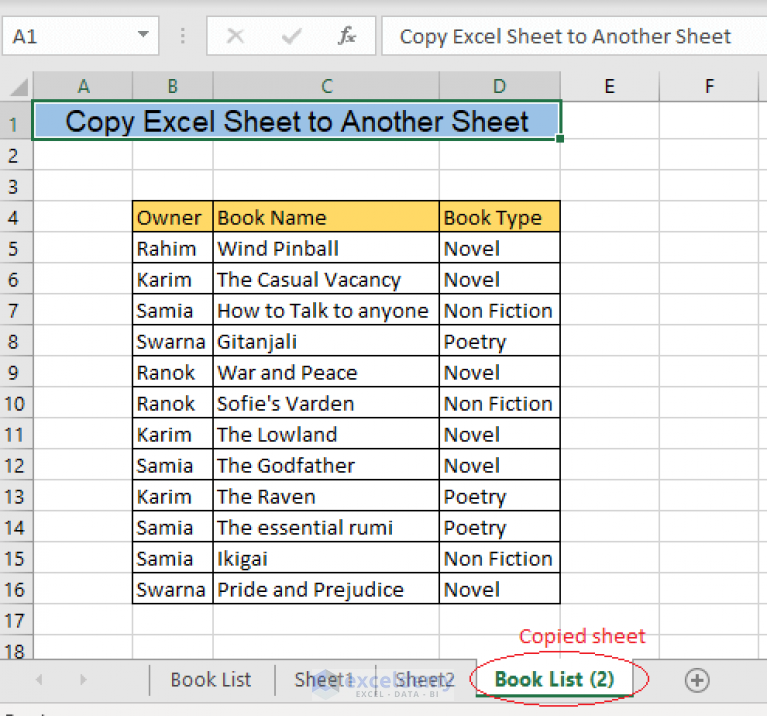5 Easy Ways to Switch Excel Sheets on Mac

Switching between sheets in Microsoft Excel on a Mac can enhance your productivity and streamline your workflow. Whether you're managing large datasets, working on complex financial models, or simply organizing your data, knowing how to navigate efficiently within Excel can save you considerable time. Here are five easy ways to switch Excel sheets on your Mac:
1. Use Keyboard Shortcuts

Keyboard shortcuts are the quickest way to perform tasks in any software, and Excel is no exception:
- Control + Page Down (Ctrl + PgDn): Move to the next sheet in the workbook.
- Control + Page Up (Ctrl + PgUp): Move to the previous sheet in the workbook.
- Command + Tab: This won't switch sheets directly, but it helps you navigate between open Excel windows or other applications quickly.
💡 Note: Remember that Command + Tab only works for switching between applications, not sheets within the same Excel file.
2. Mouse Navigation

For users who prefer mouse navigation or touchpad gestures:
- Click on the sheet tabs at the bottom of the Excel window to switch sheets directly.
- Use the scroll bar arrows or swipe horizontally on your touchpad to cycle through the sheets if they are not visible due to screen size.
3. Right-Click Sheet Navigation

If you want to see all sheets, especially in a workbook with many tabs:
- Right-click on the navigation arrows to the left of the sheet tabs.
- Select from the list of all sheets.
📌 Note: This method is particularly useful for workbooks with many sheets when you need to quickly locate and switch to a specific one.
4. Use Custom Macros

For power users or those who frequently work with repetitive tasks:
- You can write VBA (Visual Basic for Applications) macros to automate sheet switching.
- A simple macro could be:
Sub SwitchToNextSheet() Sheets(ActiveSheet.Index + 1).Activate End Sub - Assign this macro to a button or a keyboard shortcut for easy access.
5. Sheet Navigation Pane

If you prefer a visual approach:
- Enable the Sheet Navigation Pane by going to View > Show and select Sheets.
- This pane shows all the sheets in your workbook in a vertical list, allowing you to click on any sheet to switch to it.
Here's how the pane looks:
| Action | Result |
|---|---|
| Click on sheet name in pane | Switches to that sheet |
| Drag sheet tab up or down | Reorder sheets |

🚀 Note: The Sheet Navigation Pane can be particularly helpful when dealing with workbooks with a large number of sheets.
Summing up, mastering the art of quickly navigating through your Excel sheets can greatly improve your efficiency when working with complex workbooks. By leveraging keyboard shortcuts, mouse clicks, right-click menus, custom macros, and the Sheet Navigation Pane, you ensure that you’re making the most out of Microsoft Excel on your Mac. Each method provides a unique approach to suit different working styles, making your Excel experience more fluid and tailored to your needs.
Can I switch sheets using only the keyboard?

+
Yes, using Control + Page Down and Control + Page Up will switch to the next and previous sheets respectively. These shortcuts work directly from the keyboard without any additional setup.
How do I navigate to a specific sheet in Excel on Mac?

+
To navigate to a specific sheet, you can either right-click on the sheet navigation arrows or use the Sheet Navigation Pane to click on the desired sheet name.
What if I have too many sheets to manage?

+
Consider using the right-click method or enabling the Sheet Navigation Pane for easier management of multiple sheets.
Is there a way to reorder sheets without dragging and dropping?

+
You can use VBA macros to automate sheet reordering, or manually drag sheets in the Sheet Navigation Pane for a visual approach.



